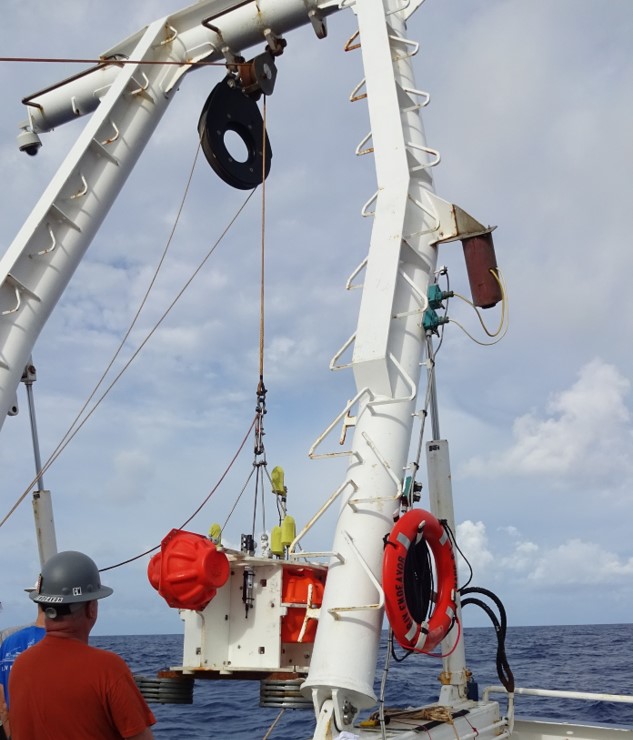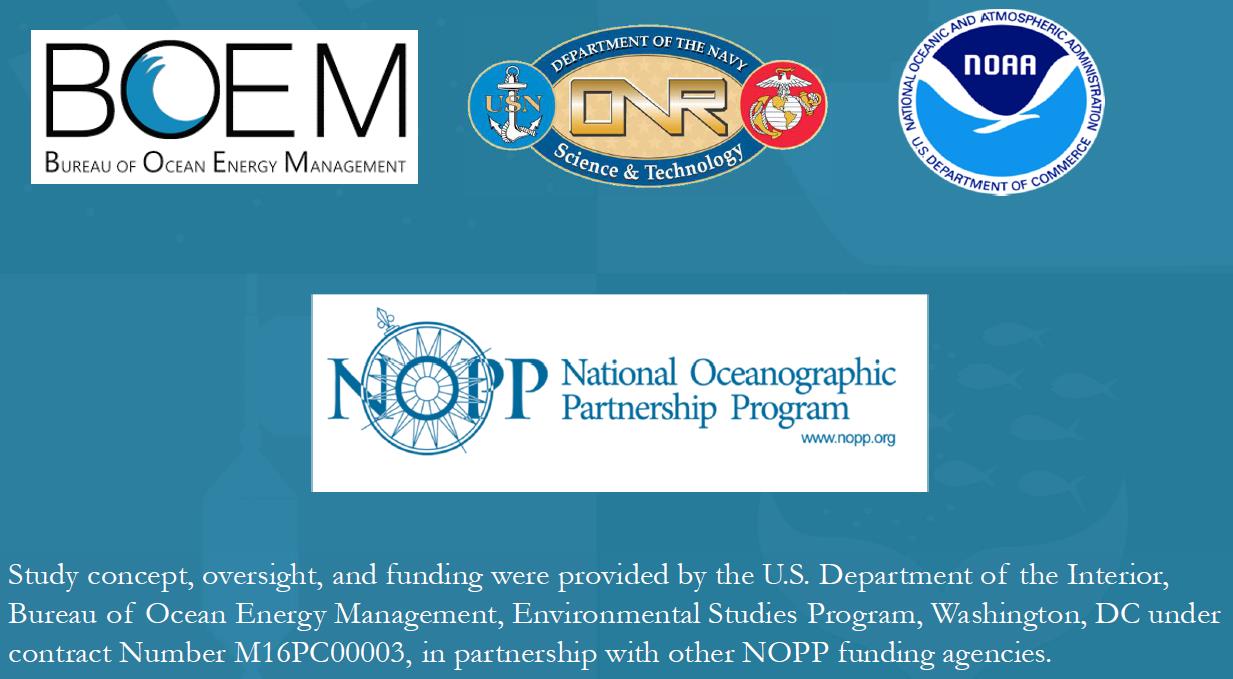7 November 2018
Yesterday was another successful recovery and re-deployment of an ADEON lander at our second site BLE- Blake Escarpment far offshore of Florida. The recovered lander had been sitting on the bottom of the ocean recording data for the past 6 months. The largest lander dataset is being recorded by an array (or coordinated set of) hydrophones. The array allows us to determine direction of some of the sources that are detected during analysis. Sources that are common to hear on the Atlantic Outer Continental Shelf are transiting vessels, dolphins and whales. If you are interested in hearing some of the sounds recorded by the ADEON landers, check out the ADEON Audio Gallery on the ADEON website (https://adeon.unh.edu).

My day shift starts in about 30 min, and our first task is to recover the lander at the JAX location. This is always a stressful activity as we await the surfacing of the lander after it is released from the bottom. Each lander is equipped with an acoustic release so that we can communicate with it from the surface. Upon arrival on station, a signal is sent to the acoustic release on the lander telling it to “wake up” and surface. When it receives this command, the anchor is released, and the lander flotation brings it to the surface. The challenge is finding it once it surfaces, even though it is bright orange, has a light, and a satellite beacon. Being the impatient person that I am, I get nervous and stressed when it doesn’t surface as quickly as I would like. I’m crossing my fingers that this recovery goes smoothly.
Jennifer Miksis-Olds (ADEON Lead PI)


